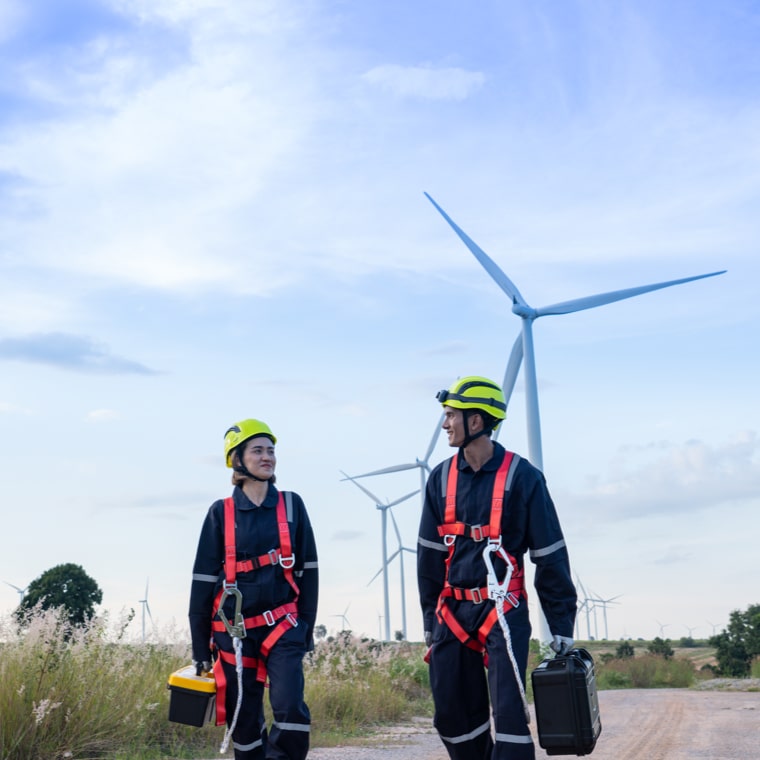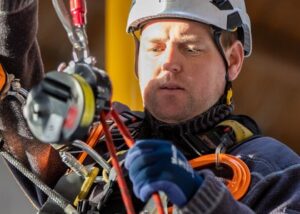Breaking into the wind energy sector involves a combination of education, networking, gaining relevant experience, and understanding the industry. Here are some steps to help you get a job in the wind energy sector:
1. Education and Training
- Specialized Courses: Consider enrolling in specialized courses or certifications related to wind energy. Examples include courses on wind turbine technology, renewable energy systems, and sustainability.
- Certifications: Acquire certifications like the Global Wind Organisation (GWO) certification, which is highly valued in the industry for safety and technical training.
2. Gain Relevant Experience
- Internships and Co-ops: Look for internships or cooperative education programs with wind energy companies or related industries. This provides hands-on experience and industry connections.
- Entry-Level Jobs: Start with entry-level positions that can lead to more specialized roles. Positions like wind turbine technician, site analyst, or junior engineer can be good starting points.
- Project Work: Participate in renewable energy projects, whether through academic programs, volunteer work, or community initiatives. Real-world project experience is highly valuable.
3. Networking
- Industry Associations: Join industry associations such as the American Clean Power Association, Wind Europe, or other local and international renewable energy organizations.
- Conferences and Events: Attend conferences, trade shows, and industry events to meet professionals, learn about the latest developments, and explore job opportunities.
- Professional Networking: Use LinkedIn and other professional networking platforms to connect with industry professionals, join relevant groups, and participate in discussions.
4. Stay Informed
- Industry Trends: Keep up with the latest trends, technologies, and regulations in the wind energy sector. Subscribe to industry publications, follow relevant blogs, and join online forums.
- Research Companies: Identify key players in the wind energy industry and research their projects, technologies, and career opportunities. Tailor your applications to align with their needs and values.
5. Develop Key Skills
- Technical Skills: Gain expertise in areas such as aerodynamics, electrical systems, mechanical systems, and control systems. Familiarize yourself with software and tools used in the industry (e.g., SCADA systems, wind resource assessment tools).
- Soft Skills: Enhance your communication, teamwork, problem-solving, and project management skills. These are crucial for working effectively in multidisciplinary teams and managing projects.
6. Consider Geographic Flexibility
- Location: Be open to relocating, as many wind energy jobs are located in specific regions with high wind resources. Countries like the United States, Germany, China, and Denmark are leaders in wind energy.
- Remote Sites: Some jobs may require working in remote or rural areas where wind farms are typically located.
7. Target Specific Roles
- Technical Roles: Positions such as wind turbine technician, electrical engineer, mechanical engineer, and SCADA engineer.
- Project Management: Roles like project manager, site manager, and construction manager.
- Analysis and Support: Jobs such as wind resource analyst, environmental impact assessor, and policy analyst.
- Sales and Business Development: Positions in sales, business development, and marketing within the wind energy sector.
8. Apply Strategically
- Tailored Applications: Customize your resume and cover letter for each job application, highlighting relevant skills and experience.
- Job Boards: Use specialized job boards and websites for renewable energy jobs, such as RenewableEnergyJobs.com, Energy Jobline, and the career sections of industry associations.
- Direct Applications: Apply directly through company websites and follow up with contacts you may have made through networking.
With a wide range of training courses available, with huge variances in quality and applicability, deciding where to start can be a bit daunting. WindStart, powered by STL USA, is a fantastic foundation for launching your career in wind, as it covers not only all the essential GWO certifications, but also, a huge amount of skill, technical and competency training, utilising real-world equipment and situations. This means graduates are far more attractive to businesses looking to hire, as condidates have far more demonstrable skills. Plus, with funding options covering up to 100% of course fees, it also means that WindStart is open to a wider range of applicants, as long as you have a high school diploma and can carry a load of 50 pounds up stairs.
Click the button below to read more about the WindStart program and to submit your application.
Want to know more?
Click the button to learn more about the WindStart – Get into Wind Program




